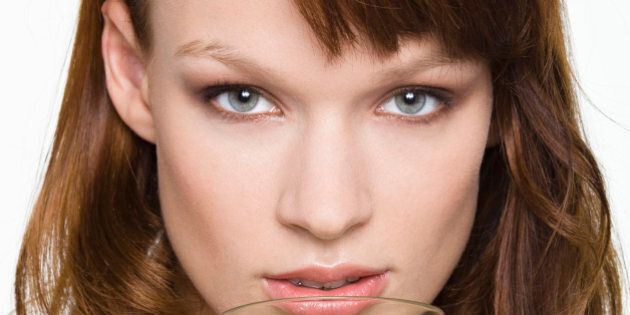
Wine, cheese, pastries, chocolate. The season of holiday indulgence has arrived.
As we soak up the festive spirit, most of us find that our self-control and restraints become lax. Intoxicated by excessive holiday eating and drinking, we may begin to plan for an improved version of ourselves in the New Year. To set out a science based plan, we first must define what is meant by the term "Detoxification."
It turns out that the human body is hardwired with an innate paired system of detoxification and elimination that plays a critical role in inactivating and eliminating chemicals derived from our diet, exposures and metabolic processes. Human detoxification involves three phases:
Phase I is the biotransformation of substances by the cytochrome P450 super-family of liver enzymes. This system is largely responsible for detoxification of pharmaceuticals, is dependent on oxygen and vitamin B derivatives as co-factors, and is influenced by genetic variations.
Phase II is the process of conjugation in which a set of enzymes known as transferases transform fat-soluble toxins and intermediates to a water-soluble form that can then be excreted in urine or bile.
Conjugation reactions include glucuronidation, sulfation, methylation, and glutathione conjugation and are all dependent on co-factors that must be replenished through dietary sources. Grouped genomic variations can impair Phase II and increase the risk of autoimmune disease and cancer.
In phase III detoxification, non-metabolized waste is pumped back into the colon for elimination.
To plan a successful detox we must support the gut and liver-- the body's internal detoxification system. Here is a simple science based six step approach to help counteract the holiday splurge.
Here are the top six recommendations:
1. Be Abstinent:
Alcohol is one the most pervasive liver "toxins" and habitual over-use is rampant. A large nutritional study conducted on over 180,000 Europeans who drank modestly and regularly suggests that drinking within recommended limits can still increase the risk of heart disease, cancer and death. Less is more. Sobriety is a good first step to Detox.
2. Go Clean:
The diet presents an important source of potential toxic exposure. From dioxin containing pesticides in our produce to a vast array of food additives including stabilizers, preservatives, chemical flavours and colorants used in processed foods; chemical contamination is rampant. By mindfully selecting organic produce and curtailing our consumption of packaged and processed foods, we can cut down on the toxic burden.
3. Eat Colourfully:
A plant based diet that spans the colour wheel of phytonutrients provides essential anti-oxidant vitamins and minerals required as co-factors in Phase I and II of detoxification. Micro-nutrient deficiencies resulting from inadequate intake or malabsorption can impede detoxification.
4. Crucifers are King:
Cruciferous vegetables like kale and broccoli reign as the kings of detoxifying foods as they are rich in glucosinolates; phytochemicals that induce Phase II of detoxification and inactivate carcinogenic chemicals. Cruciferous consumption (unlike total fruit and vegetable consumption) has been associated with reduced risk of lung, colon and breast cancer
The effect is dependent on variations within human genetics and the presence of gut flora that convert glucosinolates to protective compounds known as isothiocyanates and indoles (i.e. sulforaphane and indole-3-carbinol (I3C)). These phytochemicals increase urinary excretion of estrogen and may help to prevent both breast and endometrial cancer.
5. Ferment to Prevent:
The microbiome describes the collection of micro-organisms that are housed within the human body, largely in the gut, and play a critical role in our immune function, metabolism, and detoxification. Referred to as the "Second Genome", the microbiota contains 10-fold the genetic material of our human DNA. Gut flora play a role in the absorption and activation of vitamins and induce Phase II and III of detoxification. Fermented foods offer a naturally occurring symbiotic combination of food substance and probiotics. As an alternative or adjunct to a probiotic supplement, consuming fermented foods like miso, kefir, kimchi and kombucha may be beneficial in restoring optimal balance to the gut ecosystem.
6. Get Going:
Dehydration and constipation impede the body's ability to eliminate the waste products of detoxification. Adequate intake of water and soluble fibres ensures final excretion of toxins in the urine and stool. Good sources of dietary fibre include fruits, vegetables, seeds (chia, flax) and whole grains. Regular aerobic exercise further helps to keep the bowels moving and lymphatics draining. So get moving to get elimination going.
These six steps of science-based Detox can help you enjoy a merry and healthy holiday season!
Dr. Jennifer Pearlman, MD CCFP NCMP FAARM ABAARM
Women's Health, Hormone and Beauty Expert focused on aging well from the inside out.
Follow HuffPost Canada Blogs on Facebook